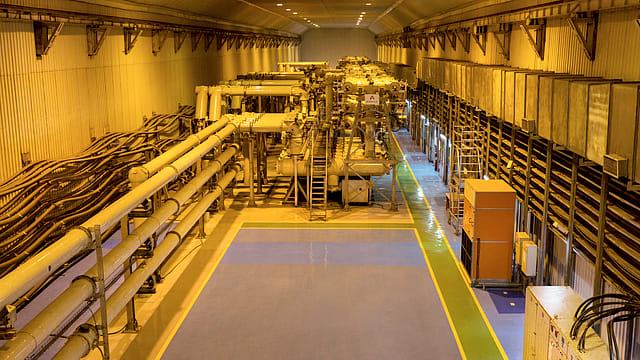JSW’s green bet: Guess how to use power plants!
ADVERTISEMENT

Billionaire Sajjan Jindal-led JSW energy is one of the largest players working towards going green. The company has set aside a target to reach 20 GW of power generation capacity by 2030, which will have around 85% of the green and renewable energy portfolio. It’s working on technologies like green hydrogen, offshore wind, and battery energy storage and has recently tied up with Australia-based Fortescue Future Industries (FFI) to explore green hydrogen development and use in industrial and transport sectors in India. Under the agreement, FFI and JSW Energy will collaborate on potential projects in green hydrogen production. They will also explore opportunities to utilise green hydrogen for steel making, hydrogen mobility, ammonia, and other mutually agreed industrial applications in India.
The company said that next financial year onwards, it will commission around 100–115-megawatt (MW) of projects every month or 400-500 MW on a quarterly basis. This is in tune with India's ambitious target of achieving 450 GW of renewable energy by 2030 that was pledged at the Paris Agreement of December 2015.
"There is a pressure on the system to retire the old thermal power plants. In last five years close to some 10,000 megawatt of the power plants have got retired and new norms have laid down a timeline to retire close to 45-50 GW of the capacity in next five-seven years time frame," Prashant Jain, JMD & CEO, JSW Energy said. "Even if they retire in 8-9 years, there will be a demand for incremental capacity which will be required to be met. I believe 450 GW of renewable energy capacity is a conservative estimate this is going to happen sooner rather than later."
January 2026
Netflix, which has been in India for a decade, has successfully struck a balance between high-class premium content and pricing that attracts a range of customers. Find out how the U.S. streaming giant evolved in India, plus an exclusive interview with CEO Ted Sarandos. Also read about the Best Investments for 2026, and how rising growth and easing inflation will come in handy for finance minister Nirmala Sitharaman as she prepares Budget 2026.
Jain explains that they average life of their assets already in use is 10 years. He believes that thermal plants will live their complete useful life cycle because their "purpose is going to change in the future".
"Thermal plants will become and work like a battery storage system. I am integrating my my power plant along with another [clean energy] plant to provide a round-the-clock solution," Jain said. What he means is that JSW Energy will be integrating their thermal power plants with their wind or solar power plants so that when the latter are not in use only then thermal is utilized to generate power. "Since alternative sources of power are intermittent, I'm only using them when they're available and I'm able to reduce my greenhouse gas emissions by reducing my thermal power usage. There will be a stage when my thermal power plant will be running at a lower capacity and work as a storage system," he said.
Jain expects this stage to come in next two years. JSW energy has a target of becoming a 20 GW company by 2030. Today, 65% of the company's portfolio is thermal today and the rest is renewable energy. And in two years, he says, thermal will be 55% and probably in next 7-8 years, it could be 85%.
The company reported a fall of 4.3% in net sales from Rs. 1,805.15 crore in June 2020 to Rs 1,727.54 crore in June 2021. Its quarterly net profit also fell 63.83% to Rs. 201.10 crore in June this year.
While the power demand was affected due to the pandemic, Jain expects it to rationalize in the longer term as battery cell prices come down and more manufacturing shifts in-house. "The government is already doing its bit and now these big industrial houses like Adani, Ambani and Tata are investing in the industry. We are very upbeat about it that it should be manufactured in India," he said. "Now that capital is not at all a constraint, people very optimistic about the sector despite several constraints."
